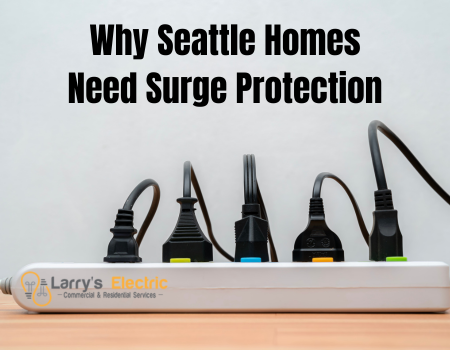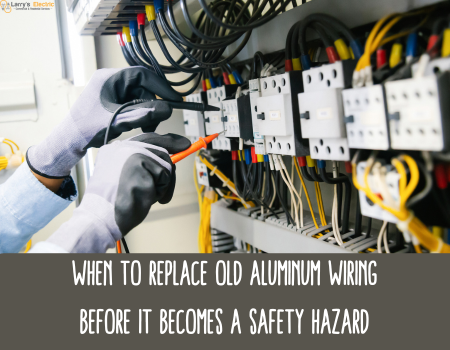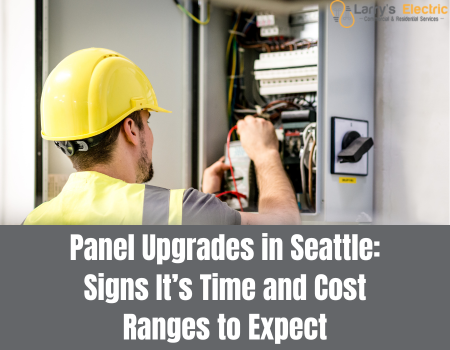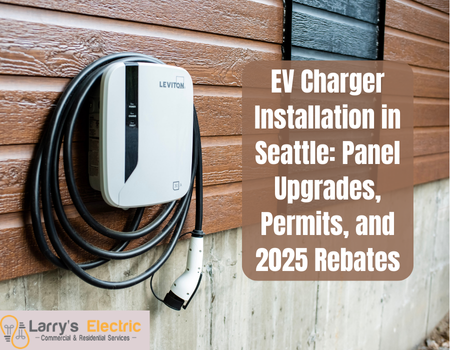If you live in Seattle, you’ve probably noticed how much the city’s electrical landscape has evolved. Between constant construction, expanding light rail systems, and frequent weather-related grid disruptions, Seattle’s power infrastructure is under more pressure than ever. While most homeowners assume surge protection matters only during a thunderstorm, the reality is that modern city living introduces new, often invisible electrical threats.
Whether you’re in Capitol Hill, Ballard, or Bellevue, investing in professional surge protection isn’t just a smart move—it’s a necessity for protecting your electronics, appliances, and home wiring from the unpredictable nature of the grid.
Understanding Power Surges in Seattle
A power surge occurs when there’s a sudden spike in voltage traveling through your home’s electrical system. These spikes can come from lightning strikes, but in urban environments like Seattle, the more common causes are grid fluctuations, equipment malfunctions, and infrastructure interference.
Every day, your home’s electrical system deals with tiny surges from devices turning on and off, HVAC systems cycling, or grid shifts during peak demand hours. Over time, these micro-surges degrade wiring, shorten appliance lifespans, and can even lead to fire risks.
For Seattle homes, the grid fluctuation risk is particularly high due to the city’s dense infrastructure and growing reliance on electric transit systems like the Sound Transit light rail network. The movement of trains and constant switching in the rail’s electrical systems can create transient voltage spikes that ripple into nearby residential grids.
How Light Rail Interference Impacts Homes
One unique challenge in Seattle is light rail interference. The electrical systems that power the city’s expanding rail network use high-voltage direct current (HVDC), which can sometimes cause electromagnetic interference or brief voltage disturbances in nearby power lines.
While these fluctuations are usually small, they can still damage sensitive electronics such as routers, computers, smart home hubs, and even modern appliances with digital control boards. For homes situated close to light rail lines or busy power corridors, the risk increases with each expansion phase.
In these cases, even if you’ve never experienced a full blackout, your devices could be quietly deteriorating from repeated minor surges. That’s why many Seattle homeowners are now turning to home electrician Seattle surge experts to install whole-home surge protection systems.
The Weather Factor
Seattle’s weather adds another layer of complexity. Although not known for frequent lightning storms, the region’s heavy rainfall, high humidity, and occasional wind events can still cause transformer faults and utility disruptions. These weather-related issues often lead to voltage irregularities and power cycling throughout neighborhoods.
During the fall and winter months, when heating systems and lighting demands spike, the strain on Seattle’s power grid can produce even more fluctuations. Without proper surge protection, this seasonal variability can lead to costly damage across multiple home systems.
Why Surge Protection Matters More Than Ever
Modern homes are filled with sensitive electronics—from smart thermostats and LED lighting systems to EV chargers and solar power setups. Each of these devices is vulnerable to sudden voltage changes. Even a brief surge can cause data loss, system malfunctions, or permanent hardware failure.
Here’s what a comprehensive surge protection setup offers Seattle homeowners:
- Whole-home coverage: Protects all devices connected to your electrical panel, not just individual outlets.
- Layered defense: Combines panel-mounted surge protectors with point-of-use devices for optimal safety.
- Long-term savings: Reduces repair and replacement costs from damaged electronics.
- Fire prevention: Prevents wiring damage that could lead to electrical fires.
By installing a professionally rated surge protector, you create a buffer between your home and the volatile Seattle grid.
Cost vs. Risk
Some homeowners hesitate to invest in surge protection because they view it as optional. But when you consider the average cost of replacing major home electronics—like HVAC systems, refrigerators, computers, or entertainment setups—the math becomes clear.
A whole-home surge protector typically can be expensive, with installation costs included. Compare that to thousands in potential damage from one bad grid fluctuation, and it’s an easy decision. Plus, many insurers now recommend or even require surge protection for coverage eligibility in high-risk areas. Larry’s Electric in Seattle and King County offer discounted competitive pricing for surge protection integration for your home or commercial business.
Choosing the Right Solution
When working with a home electrician Seattle surge specialist, look for:
- UL-listed surge protectors that meet current safety standards.
- Clamping voltage ratings of 400 volts or less for faster response times.
- Warranty-backed systems that cover connected devices.
- Proper grounding and regular system inspection.
A trusted local electrician familiar with Seattle’s infrastructure and power grid conditions can assess your home’s unique risks and recommend the best protection strategy.
The Bottom Line
Seattle’s expanding infrastructure and unpredictable grid conditions make surge protection an essential part of home safety. Between grid fluctuation risk from the city’s light rail systems and constant micro-surges from the power grid, unprotected homes face silent but significant electrical damage over time.
By partnering with a professional home electrician Seattle surge provider and installing whole-home protection, you can safeguard your devices, extend the life of your electrical system, and gain peace of mind knowing your home is ready for whatever Seattle’s power grid throws your way.









